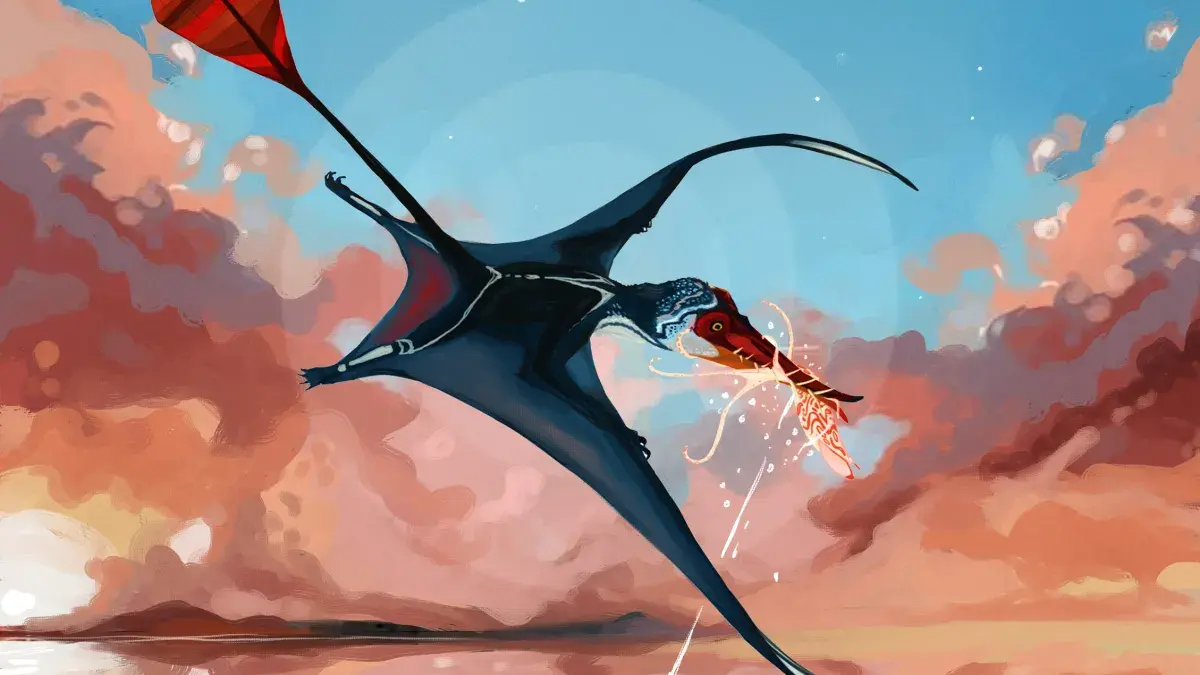Pterosaurs – commonly known as pterodactyls – were the first and largest vertebrates to achieve powered flight and did so with the aid of a lattice-like vane, attached to the tip of their tails, research reveals.
Stable flight
The diamond-shaped structure, made from interwoven membranes, prevented pterosaurs’ long tails from fluttering like flags in the wind and instead helped to guide and stabilise the creatures in flight.
Previous research revealed that maintaining stiffness in the tail vane was crucial to enable early pterosaur’s flight, but exactly how this was achieved remained a mystery, until now.
Mystery solved
The study, led by paleontologists from the University of Edinburgh discovered that that the tail vane most likely behaved like a sail on a ship, becoming tense as the wind blew through the cross-linked membranes to steer the ancient reptiles through the sky.
Studying prehistoric animals is usually restricted to examining fossilized bone but sometimes traces of delicate tissues such as skin and membranes can survive for millions of years, experts say.
Fresh techniques
The research team used a new technique called Laser Simulated Fluorescence – which causes organic tissues almost invisible to the naked eye to glow – on the fossils of a pterosaur known as Rhamphorhynchus.
Despite being 150 million years old, the delicate membrane of Rhamphorhynchus’ tail vane and its internal structures visibly popped up when scanned with the laser, providing the team with valuable insight into Pterosaurs’ anatomy and evolution.
Total domination
Pterosaurs thrived in the skies for more than a hundred million years, before perishing with the dinosaurs in the end-Cretaceous extinction.
The research, published in the journal eLife, was led by scientists from the University of Edinburgh and the Chinese University of Hong Kong in collaboration with the National Museum of Scotland, Edinburgh and the Natural History Museum, London. It was funded by NERC.


